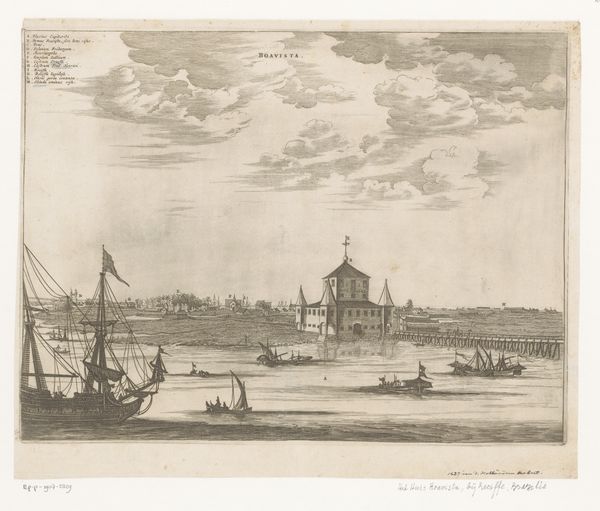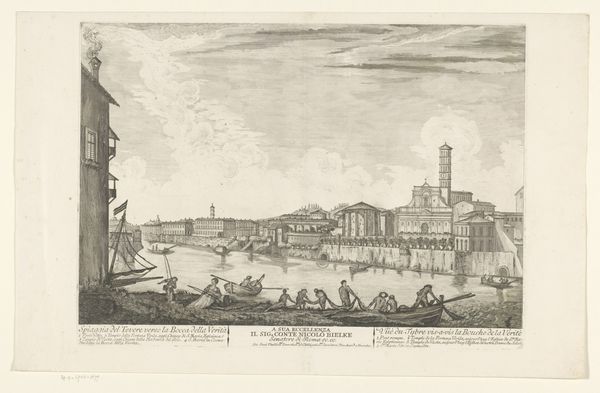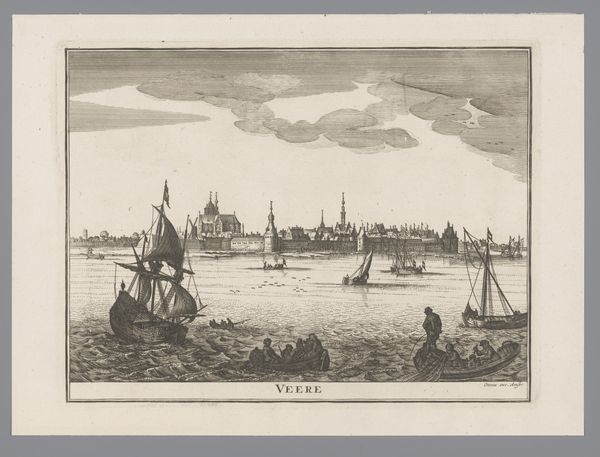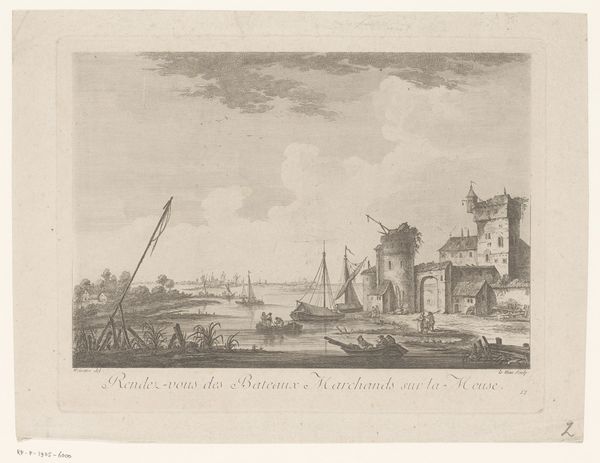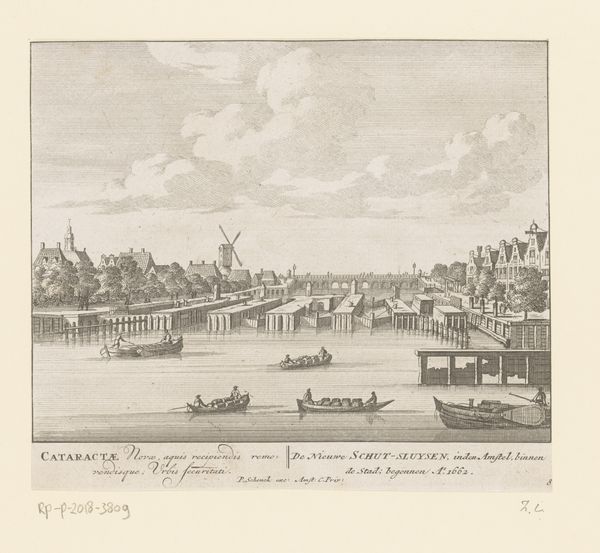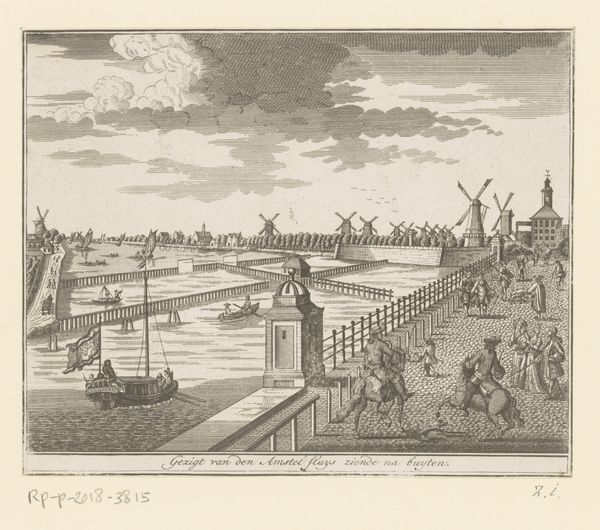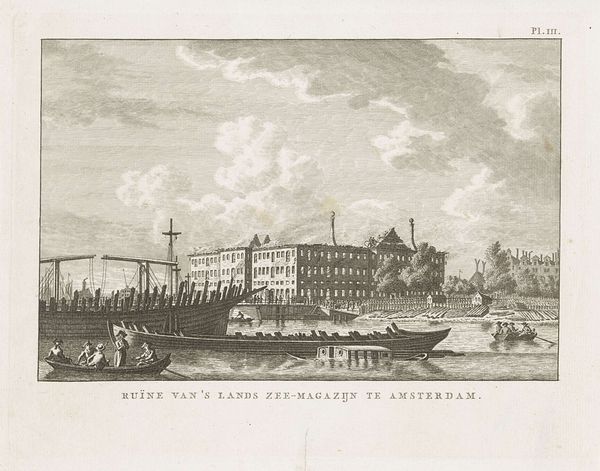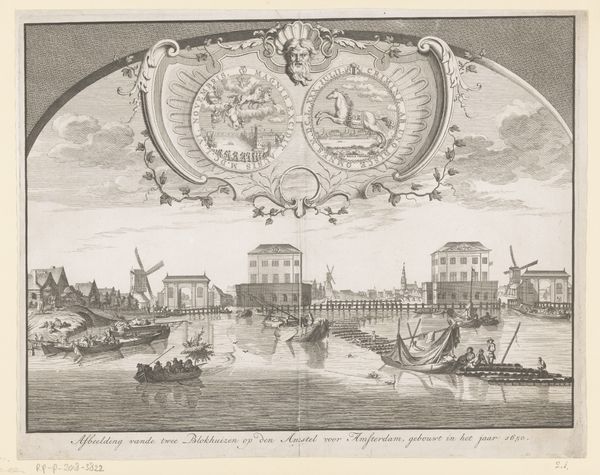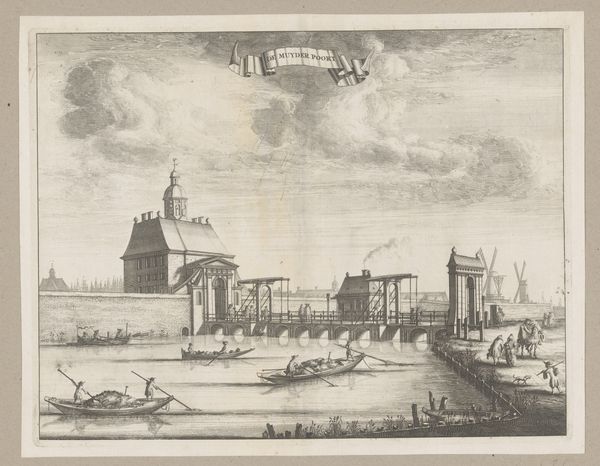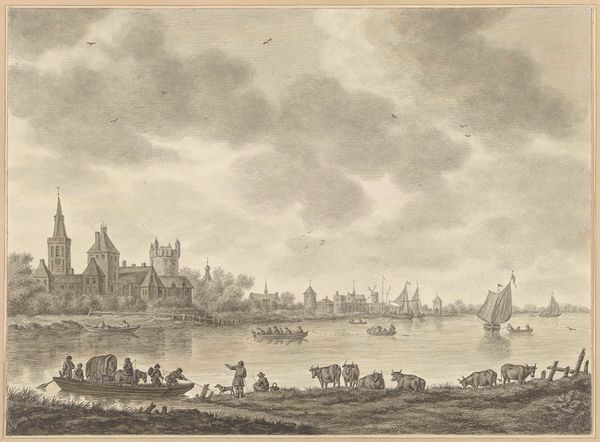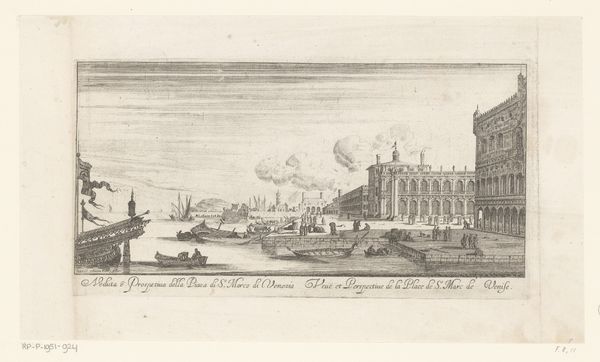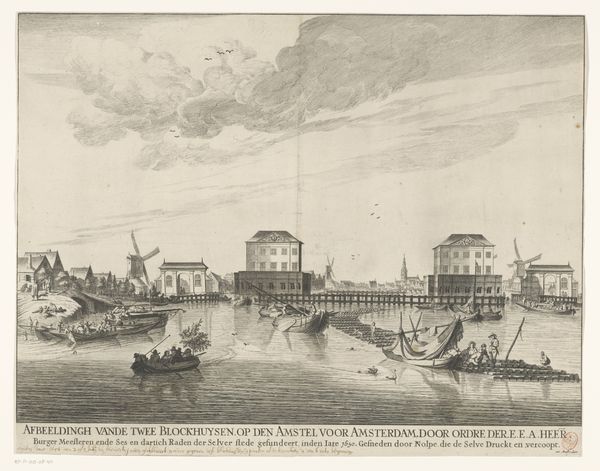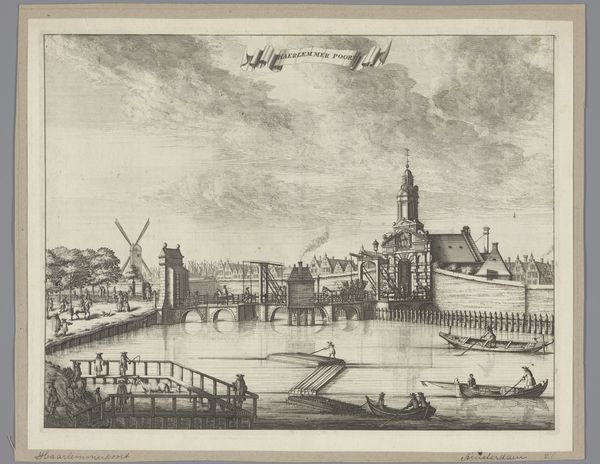
print, engraving
#
dutch-golden-age
# print
#
landscape
#
cityscape
#
engraving
#
realism
Dimensions: height 142 mm, width 184 mm
Copyright: Rijks Museum: Open Domain
This etching, made between 1651 and 1654, offers a view of the two blockhouses on the Amstel River. Dominating the scene are the blockhouses themselves, symbols of civic authority. Consider how the architecture of the blockhouses—sturdy, elevated, and symmetrical—echoes the design of ancient Roman fortresses, emblems of power and order. These architectural forms resurface throughout history; in the Renaissance, they appear in the designs of villas and public buildings, representing a yearning for the stability of a bygone era. The wind, harnessed by windmills, also stands out. These structures not only grind grain but also symbolize human ingenuity and the taming of nature. Windmills, like blockhouses, have been reimagined in different eras, appearing in rustic scenes and utopian landscapes, evolving from symbols of labor to icons of pastoral beauty. The Amstel River, teeming with boats and people, hints at the emotional heart of a thriving community, ever dynamic and flowing through time. These are symbols that connect us to the past, reminding us that history is a perpetual cycle, where symbols reappear, evolve, and find new life in different contexts, shaped by our collective memory.
Comments
No comments
Be the first to comment and join the conversation on the ultimate creative platform.
